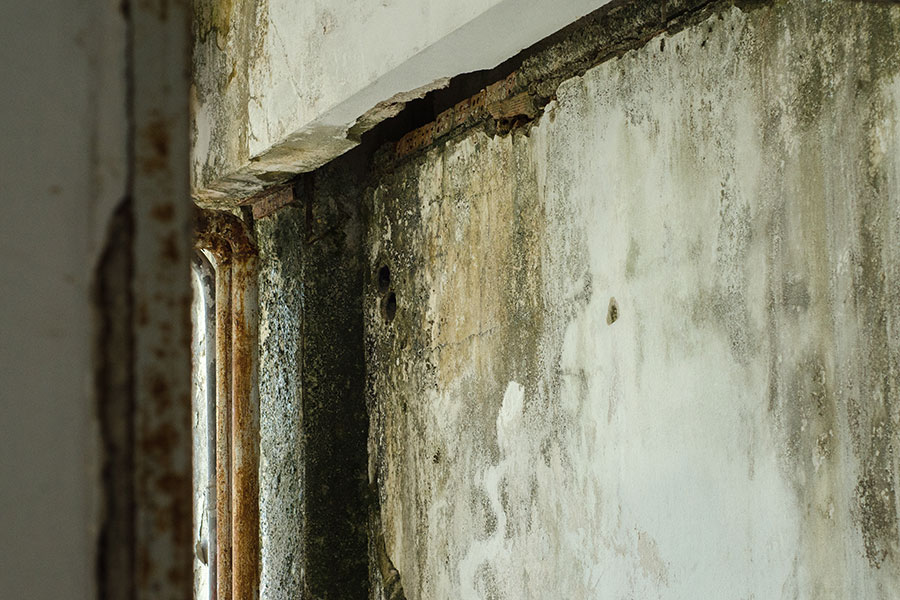What does Supreme Basement Solutions and mold have in common? We both love basements and crawlspaces. These cold spaces are often susceptible to moisture issues within the home. Where there is moisture mold will try to grow. Let’s identify if you have a mold problem before it grows out of control.
Get to Know Mold First
Mold is not a fun subject to learn about, let alone have in your home, but it’s important to know why mold is problematic. Mold is a fungus that grows in damp places. While we won’t list every type of mold there is, what is important to know is that mold releases mycotoxins into the air, which you could guess are bad for your health. Black mold is a commonly known type, but it comes in all colours, including white, orange, purple, pink, and green.
Mold loves environments that are just the right level of moisture, somewhere between 60% and 80% humidity. They love growing on paper products, cardboard, ceiling tiles, wood and wood products, dust, paints, insulation materials, drywall, carpet, fabric, and upholstery.
Mold in a crawlspace is especially concerning because of air convection in your home. Hot air rises, so when summer air enters your crawlspace, it begins to form condensation on surfaces, and that air rises into the main floor and beyond. If mold is growing in your crawlspace, air convection is speeding up the process of spreading mycotoxins through your entire home.
How to Identify a Mold Problem?
Smell – Mold has a musty, earthy, or even tangy type of smell. The pungent odour mold secretes is often the clearest sign home owners catch onto.
Stains – Mold will stain the surface it is growing on, so you’ll want to keep an eye out for spots on surfaces that have any of the colours listed before. It could be white streaks, or green furry tufts, or colourful splotches.
Peeling Walls – When moisture finds its way behind wallpaper or paint, the wallpaper or paint will begin to bubble because the water weakens the glue holding it to the wall. Where moisture is, mold is drawn to grow there. This one is important to keep in mind because it means the mold could be hidden from sight!
Moisture – If your basement or crawlspace is experiencing moisture issues, then mold is sure to follow. This includes any cracks in your basement foundation, leaks in the home, if your crawlspace has air vents for circulation. Check out our blog “Common Cause of Basement Moisture and How They Should Be Fixed” for more information on identifying moisture issues. Use a hydrometer to test the humidity levels of your basement or crawlspace. Remember, anywhere between 60%-80% is not good.
Condensation – Keep an eye out for any water droplets that form on windows, metal, or other cold surfaces. It is a clear sign that water is present and a problem needs to be addressed.
Poor Health – Have you noticed recently that you have been experiencing health issues more frequently? Symptoms of a mold problem would include red or watery eyes, sneezing, itchiness, chest tightness, shortness of breath, and other allergenic symptoms. This is especially important for those who have compromised immune systems.
How to Treat a Mold Problem?
The root cause of mold is moisture, so it is important to identify where the moisture is coming from, and fix the moisture problem at the source. There is no point in removing mold without treating the source of the problem, otherwise it will keep coming back.
When it comes to basements, the best solution to prevent moisture from damaged foundations is to install a waterproofing system with a Pro Series Sump Pump. A silver vapour barrier will prevent moisture from entering the basement, and send it through the patented SafeDrain™ System, which send water into the sump pit, where a Pro Series Sump Pump safely discharges the water outside.
When it comes to crawlspaces, encapsulation will be the way to go. Once the mold is removed, crawlspace air vents are sealed, a polyethylene vapour barrier is installed, coupled with a spray foam vapour barrier to ensure no moisture can enter the crawlspace again. Check out our blog “4 Benefits to Encapsulating Your Crawlspace” for more information.
If you have identified a patch of surface mold that is no bigger than a few square feet, then it may be something that could be fixed on your own. A solution of water and soap, or water and bleach should do the trick. Use the solution to scrub away all the mold spores and then be sure to keep the area dry afterward. If doing a treatment on your own, be sure to use protective equipment such as breathing masks, gloves, and protective glasses.
If in doubt, it is best to call a professional to get a free assessment of your home. Our sales team is specially trained to not only propose a solution, but to identify and help you understand the problem, so that you can make the best-informed decision for your home.

